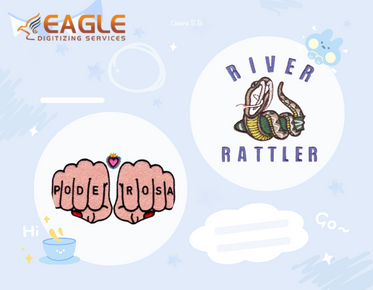From Scanned Image to Vector Art: The Complete Digital Conversion Process
The transformation of scanned images into crisp, scalable vector art is an essential process in today’s digital world. Vector art offers versatility, enabling images to be scaled without losing quality, making it ideal for printing purposes and beyond. This blog explores the comprehensive process of digital conversion, highlighting the benefits and applications of vector art alongside insights into services provided by industry leaders like Eagle Digitizing.
Understanding Vector Art
Vector art comprises mathematical equations to create images through points, lines, and curves. Unlike raster images that rely on pixels, vector images can be resized without compromising quality. This unique feature allows them to be utilized in various applications, including logos, large format prints, and more. The primary advantage of vector art services is their adaptability, which ensures consistency across multiple formats and sizes.
The Conversion Process: From Raster to Vector
Conversion from raster to vector involves several steps and requires precise handling. The process begins with tracing the image, where each line and curve are defined with the help of vector software. This step is crucial for ensuring that the final product maintains the integrity of the original design. Conceptual understanding of vectorization services is important, as it involves transforming pixelated images into smooth, scalable vector graphics.
Raster to Vector Conversion Techniques
There are different techniques for raster to vector conversion, such as manual tracing and automatic software conversion. Manual tracing allows for greater control over the details and nuances of the image, often yielding higher quality results. However, it can be time-consuming and requires a skilled hand. On the other hand, automatic conversion software offers speed and efficiency but may lack the refined touch that manual adjustments provide.
Tools and Software for Vector Conversion
Various tools and software facilitate the conversion of bitmap to vector files. Programs such as Adobe Illustrator and Corel Draw are industry standards, offering robust functionalities for complex vector designs. These tools come equipped with a range of features that allow for detailed vector tracing, editing, and color adjustment. Many image to vector conversion services online also offer free tools for basic vectorization needs.
Challenges in Raster to Vector Conversion
The transition from raster to vector is not without its challenges. The complexity of the original design often dictates the difficulty of the conversion. Intricate designs with many colors may require meticulous attention to detail to prevent the loss of important features during the conversion process. Additionally, while automation aids in efficiency, it relies heavily on the accuracy of the original raster image.
Applications of Vector Art
Vector art finds applications across a wide array of industries and uses. Marketing materials, such as banners, brochures, and billboards, leverage the scalability of vectors to maintain sharpness regardless of size. Additionally, custom t-shirt printing, apparel branding, and logo creation are heavily reliant on vector art. This versatility has led to the rise of specialized vector art services online designed to meet the varying needs of businesses.
Innovations in Vector Art by Eagle Digitizing
Eagle Digitizing stands at the forefront of providing comprehensive vector art solutions. Their services include raster to vector conversion, vector tracing, background removal, and more, catering mainly to businesses in marketing, screen printing, and wholesale. With an expansive service portfolio and a 99.9% customer satisfaction rate, Eagle Digitizing has become a trusted name among both small and midsize businesses for efficient and reliable vector services.
Choosing the Right Vector Service Provider
When selecting a vector service provider, it's important to consider the quality of services offered, turnaround time, and customer support. Eagle Digitizing's comprehensive suite of vector services ensures that clients receive exacting solutions tailored to their needs. Their dedication to enhancing customer satisfaction through quality assurance and fast delivery times are testimonies to their commitment to excellence in vector conversions.
The Future of Vector Art Conversion
As technology continues to evolve, so too does the field of vector art conversion. Innovations in AI and machine learning hold the potential to revolutionize how images are vectorized, offering even greater accuracy and efficiency. The integration of automation and AI could lead to more accessible and versatile vector solutions, opening new possibilities in design and digital arts. How these advancements will shape the industry remains a topic of great interest and potential for exploration.
.png)

